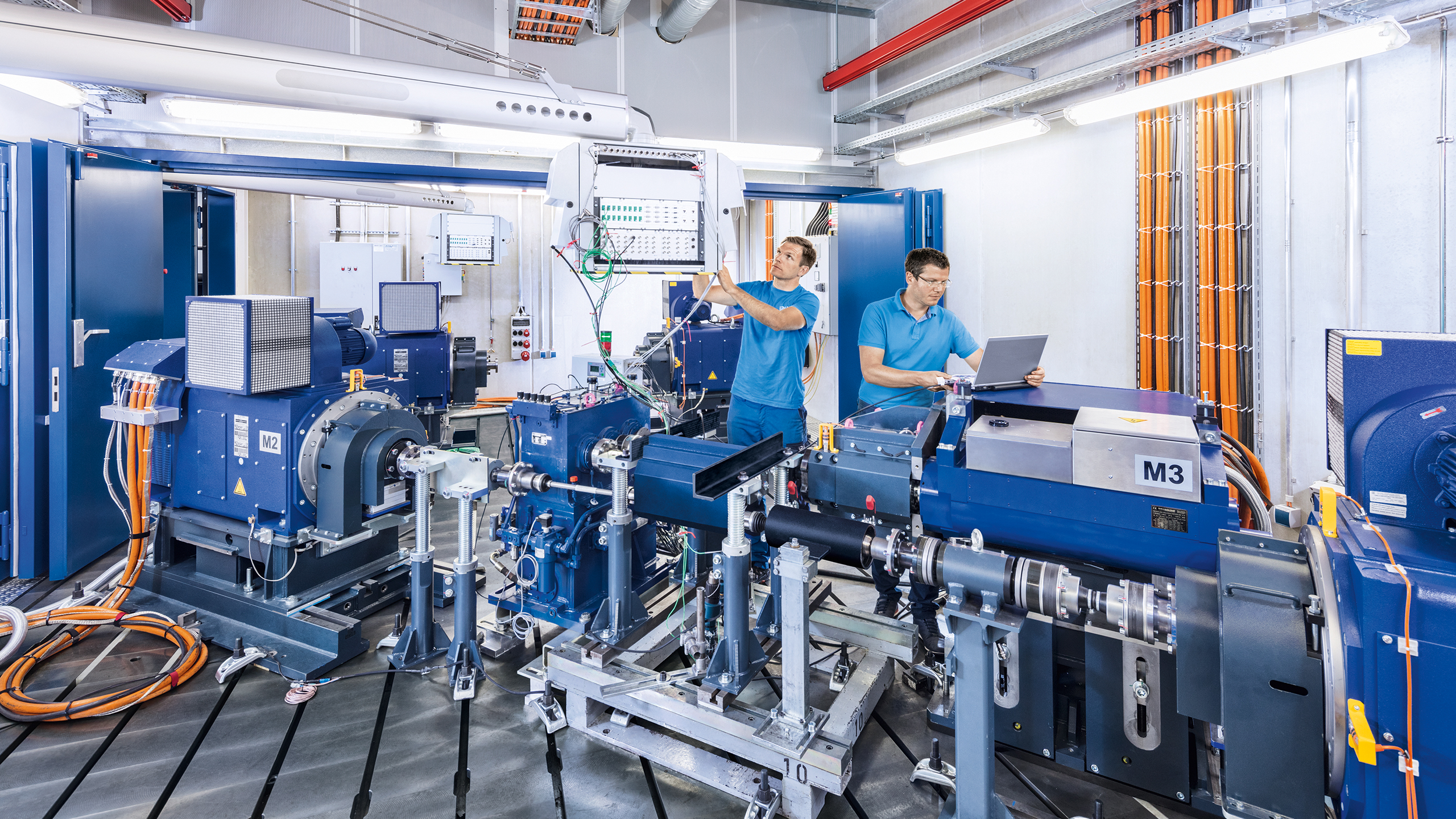Ready for the Tesla Fighters
IAV’s new test rig for electric all-wheel drives in Stollberg
They are in the pipeline at many OEMs and will be entering the market over the next few years: the “Tesla fighters” – sporty, high-power, all-wheel drive e-vehicles. And IAV in Stollberg has just the right test bench for them. By combining two to five electric motors, it can be used for examining various powertrains, such as all-electric vehicles with all-wheel or two-wheel drive.
All-wheel drives permit a higher level of recuperated braking energy and provide better drivability. Realizing this, Tesla has brought out models like the Model S. The competition is now following suit: “Many OEMs are currently working on so-called Tesla fighters that set out to compete with the American pioneer”, reports Sven Hönicke, head of the Powertrain-Testing department at IAV.
Four test benches in one
To date, most e-vehicles are front-wheel drive only, which means that approx. 20 percent of available recuperation energy is left unused. If this were to be recovered from both axles, it would improve energy efficiency, and hence traveling range. For this reason, the future is likely to see more and more electric fourwheel drives on the market. These, however, require special test rigs, such as IAV’s new test bench at the Chemnitz/Stollberg Development Center. The test facility is also suitable for classic transmission tests on e-cars with twowheel drive as well as for testing conventional all-wheel vehicles. “In actual fact, it is four test benches rolled into one” Hönicke says. “We can match the measuring equipment to suit any particular testing assignment without a problem.”
This is made possible by the flexible concept behind the test bench: it combines a transmission test bench with three e-motors with an axle test bench that has two electric motors. Both are separated from each other by a wall that quickly removes, whenever necessary producing a single test bench with five e-motors that can be used for testing classic and allelectric four-wheel drives. But this is not all that sets the new facility apart: it is rated for voltages of up to 1,200 volts and currents as high as 1,400 amps, making it ready for future developments in the field of power electronics up to 600 kilowatts of electric power. “Nowhere else in Germany is there a comparable test bench in this power category”, Hönicke says.
Since it went into operation in April 2017, the new test bench has been fully booked, with initial inquires having been received for testing electric all-wheel drives. “The technology works without a problem which, too, is doubtlessly attributable to our tried and proven automation solution”, Hönicke says. “We have been received on the market with open arms and are really looking forward to the first Tesla fighters.”

Technical Specifications
Traction motor
- 455 kW drive power in S1 mode/568 kW in S6 mode
- 800/1,000 Nm torque (with transmission, 2,000 Nm max.)
- Motor speed: 10,000 rpm (with transmission, 20,000 rpm max.)
- Dynamic: 46,000 rpm/s
Brake pedal controllers
- 4 x 290 kW brake capacity
- 4 x 4,200/5,200 Nm braking torque
- 3,000 rpm output machines
- Dynamics: 10,000 rpm/s
- Moment of mass inertia: 4.7 kg x m2
Other
- 600-kW battery simulator (1,200 V/1,400 A)
- Conventional all-wheel testing/electric all-wheel
- 2-EM test bench/3-EM test bench, splittable
